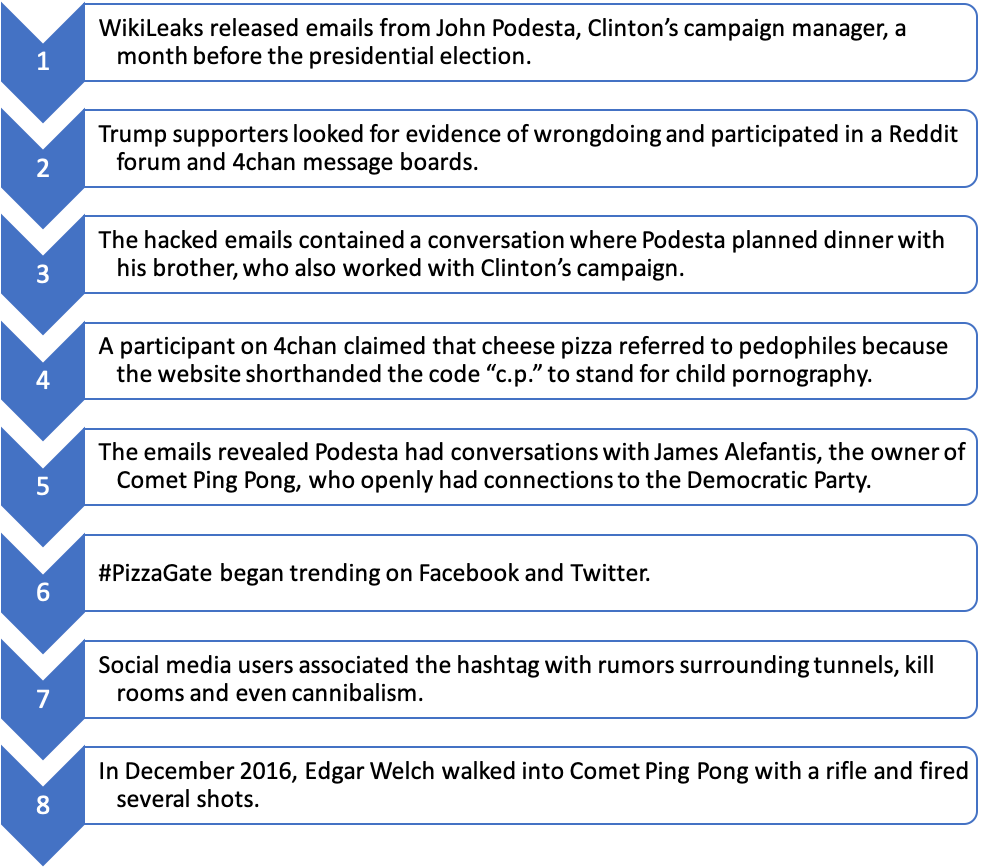Case Study – Fake News Dissemination: Pizzagate (continued)
Pizzagate Case Background
Just before the Presidential Election in 2016, a man walked into a pizza parlor and fired gunshots. While no one was injured, this incident happened because of false information being shared online.
A conspiracy theory circulated on social networking sites which claimed the Comet Ping Pong restaurant, located in Washington D.C., was hiding a child prostitution ring run by Hillary Clinton and her campaign manager. This case study will examine fake news dissemination through an article published by The New York Times, written by Aisch, Huang and Kang (2016). The authors developed a step-by-step timeline briefly explaining how the fake news spreads.

Consequences
In many cases, when people ignore fake news, it spreads. However, this case study proves that fake news can still result in tangible actions. (Tandoc, Lim & Ling, 2018). Thus, fake news can have consequences. The spread of this particular disinformation threatened much more than just a brands reputation, it put lives at risk.
James Alefantis, Comet Ping Pong’s owner, blamed the unfortunate event on the individuals who took part in spreading false information. He said in a statement to The New York Times, “I hope that those involved in fanning these flames will take a moment to contemplate what happened here today and stop promoting these falsehoods right away” (Aisch, Huang & Kang, 2016).
Discussion Questions
- Who should be blamed for the spread of fake news?
- After reflecting about the extreme consequences from the spread of fake news exhibited by the Pizzagate scandal, do you think that the accusations of disinformation went too far?
- At what point, if any, should the spread of false information be stopped?
- How would you recommend that Comet Ping Pong respond to guard their reputation?
- What should the Democratic Party have done to respond to the false allegations?